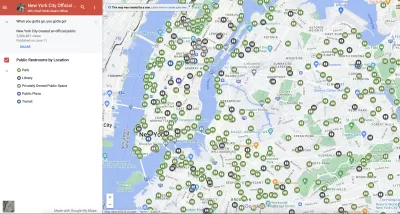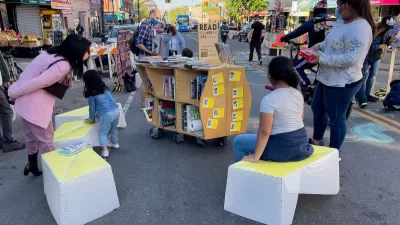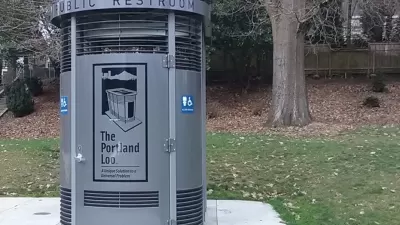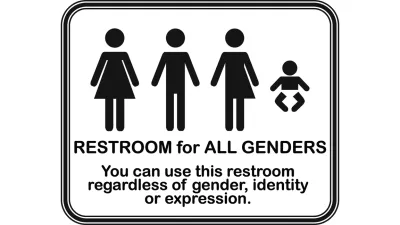New York City created a Google Maps layer to help residents and tourists alike more easily locate public restrooms.

Accessibility of public restrooms is an often overlooked yet critical aspect of the urban experience. Because if there is one universal truth, it is, “When you gotta go you gotta go.” According to a recent Bloomberg CityLab article, New York City recently acknowledged that truth when it built and released a Google Map layer that shows the city’s nearly 1,000 public toilets.
The new map, which Bloomberg reporter Sarah Holder reports was viewed 2.5 million times in the first few weeks of its launch, shows the location and operating hours of free restroom facilities in parks, plazas, libraries, and transit centers across the city. It is part of a broader city initiative called “Ur In Luck” to increase accessibility to public toilets, which also aims to create 46 new and renovate 36 existing park restrooms over the next five years. The plan includes an additional 14 self-cleaning public toilets as well.
Access to restrooms is one of humans’ most basic needs, which begs the question: Can a city be truly livable without it? With its current initiative, New York City seems to have acknowledged their importance. Will NYC serve as a role model for the many other U.S. cities that lack adequate restroom facilities?
FULL STORY: The Quest for a Public Bathroom in New York City

Manufactured Crisis: Losing the Nation’s Largest Source of Unsubsidized Affordable Housing
Manufactured housing communities have long been an affordable housing option for millions of people living in the U.S., but that affordability is disappearing rapidly. How did we get here?

Americans May Be Stuck — But Why?
Americans are moving a lot less than they once did, and that is a problem. While Yoni Applebaum, in his highly-publicized article Stuck, gets the reasons badly wrong, it's still important to ask: why are we moving so much less than before?

Using Old Oil and Gas Wells for Green Energy Storage
Penn State researchers have found that repurposing abandoned oil and gas wells for geothermal-assisted compressed-air energy storage can boost efficiency, reduce environmental risks, and support clean energy and job transitions.

Greening Oakland’s School Grounds
With help from community partners like the Trust for Public Land, Oakland Unified School District is turning barren, asphalt-covered schoolyards into vibrant, green spaces that support outdoor learning, play, and student well-being.

California Governor Suspends CEQA Reviews for Utilities in Fire Areas
Utility restoration efforts in areas affected by the January wildfires in Los Angeles will be exempt from environmental regulations to speed up the rebuilding of essential infrastructure.

Native American Communities Prepare to Lead on Environmental Stewardship
In the face of federal threats to public lands and conservation efforts, indigenous groups continue to model nature-centered conservation efforts.
Urban Design for Planners 1: Software Tools
This six-course series explores essential urban design concepts using open source software and equips planners with the tools they need to participate fully in the urban design process.
Planning for Universal Design
Learn the tools for implementing Universal Design in planning regulations.
Heyer Gruel & Associates PA
City of Moreno Valley
Institute for Housing and Urban Development Studies (IHS)
City of Grandview
Harvard GSD Executive Education
Salt Lake City
NYU Wagner Graduate School of Public Service
City of Cambridge, Maryland





























